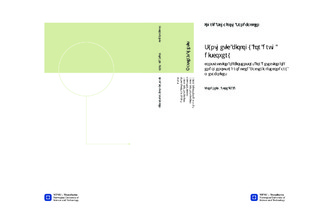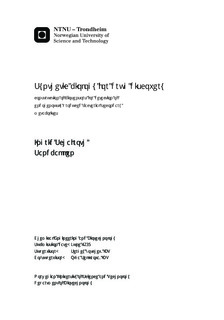| dc.description.abstract | Streptomycete bacteria are a great source of natural bioactive secondary metabolites, some of which are being used as antibiotics and anticancer drugs. Many streptomycetes have the genomic potential for producing 20-30 chemically diverse bioactive secondary metabolites, while only 2-4 secondary metabolites are produced under standard laboratory conditions. Activation of otherwise ?silent? gene clusters is possible by changing the growth conditions, but detection of new compounds is a challenging and time-consuming process. A biosensor that could detect production of new compounds would greatly assist in discovering new drugs.Many gene clusters for antibiotic biosynthesis contain genes encoding transporters for antibiotic efflux, thereby conferring resistance to the antibiotic. Expression of these genes is often induced in parallel with antibiotic biosynthesis to avoid intracellular accumulation of the toxic compound. A transcriptional biosensor can be constructed by fusing the promoter, which controls transporter gene expression, to a reporter gene. Expression of the antibiotic may then be detected, since the reporter gene is placed under the same regulatory control as the gene encoding an antibiotic efflux pump. Streptomyces venezuelae ATCC 10712 (wild type) produces two antibiotics under laboratory conditions: chloramphenicol (Cml) and jadomycin B (JadB). This bacterium also has 27 other gene clusters encoding secondary metabolites. The genes encoding transporters in the Cml gene cluster are most likely expressed in parallel with the genes encoding enzymes for Cml biosynthesis. In order to check this hypothesis, this Master thesis aims at constructing biosensors by placing a reporter gene (gusA encoding β-glucuronidase) under the transcriptional control of two promoters upstream of transporter genes (cmlF and kefB) in the Cml gene cluster. A positive control vector should be constructed by fusing the strong constitutive ermE* promoter to the reporter gene in a similar vector, while the negative control vector has no promoter.In order to construct the biosensor plasmids, a vector template (pSOK805), a reporter gene (gusA) and different promoters were PCR-amplified to ensure overlapping terminal sequences. Ligation of the overlapping DNA fragments was performed by an in vitro isothermal reaction, called ?Gibson? reaction. The reaction mixes were transformed into Escherichia coli strains and plasmid DNA was isolated from the transformants.The biosensors and control vectors were successfully assembled and verified. Three out of four vectors were site-specifically integrated into the genome of S. venezuelae by conjugative DNA transfer from E. coli ET12567. In order to test the sensitivity of the biosensors, the S. venezuelae recombinant strains were cultured in low-production medium with and without addition of ethanol. Samples were collected from the cultures to measure the chloramphenicol production and reporter enzyme activity. One of the biosensor strains showed a correlation between chloramphenicol production and the enzyme activity, but this trend needs to be verified by further experiments. Only small amounts of chloramphenicol were produced by the cells, thus different cultivation media should be tested in future experiments. The measurements of enzyme activity in the lysates are preliminary, since the protein content has to be adjusted to get comparable results. No final conclusions can be drawn on the functionality of the biosensors, before several independent experiments are performed. | nb_NO |

